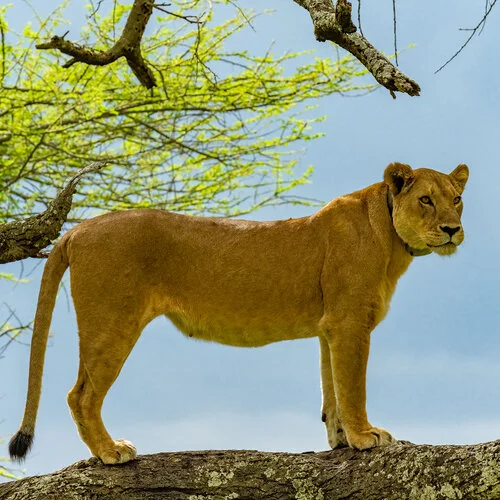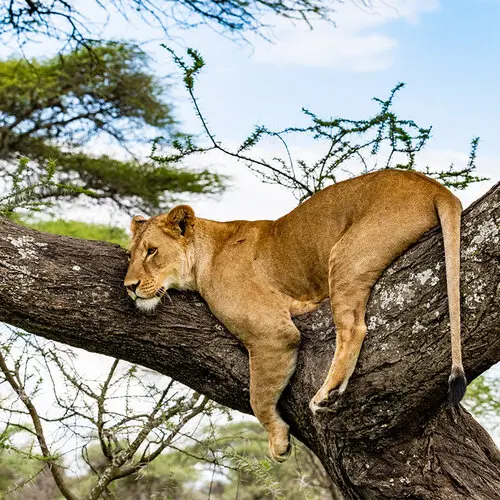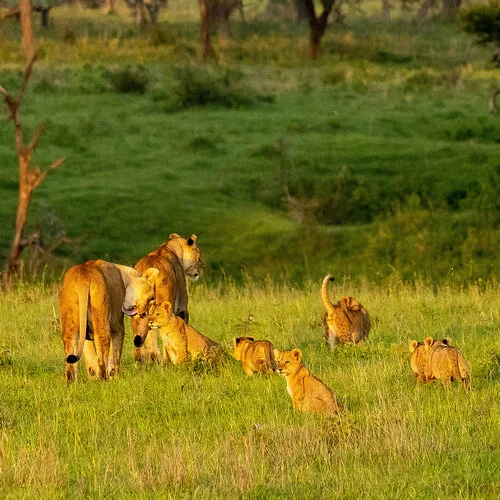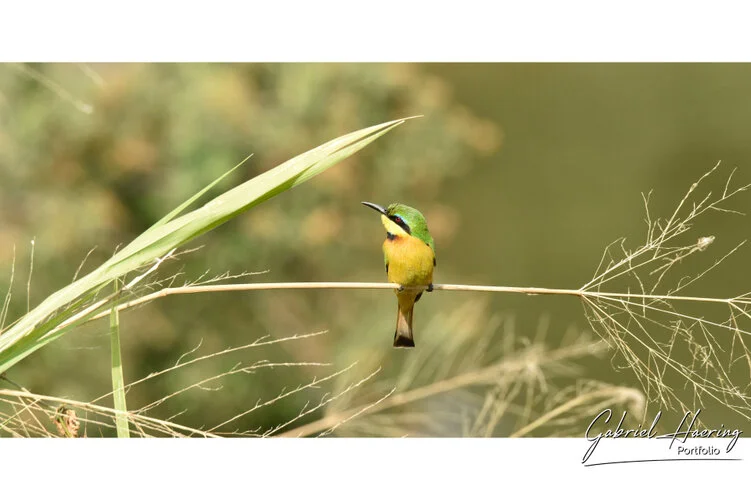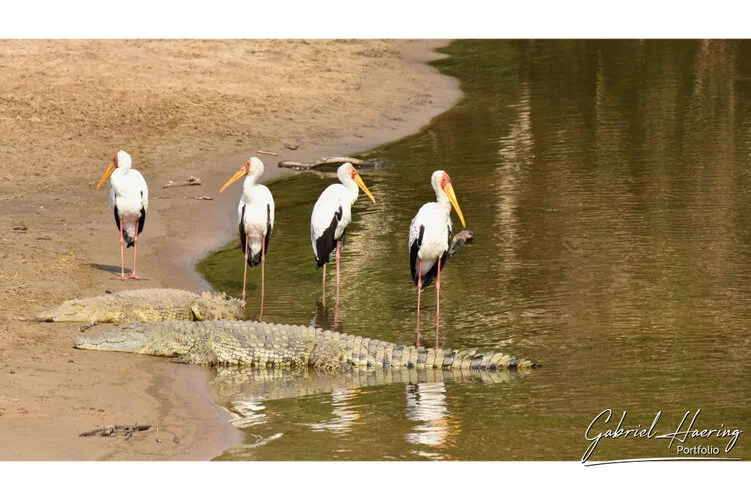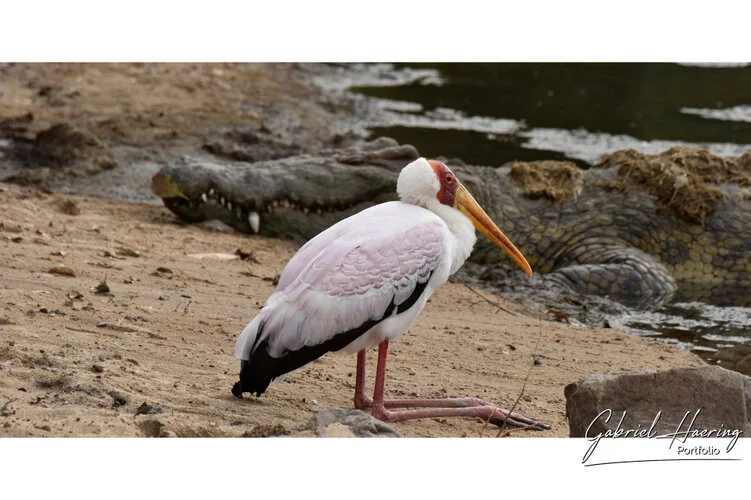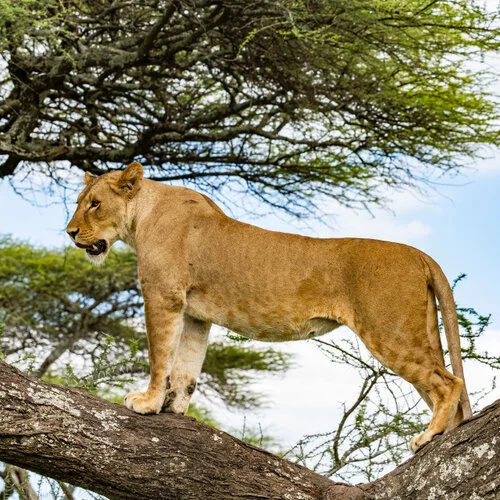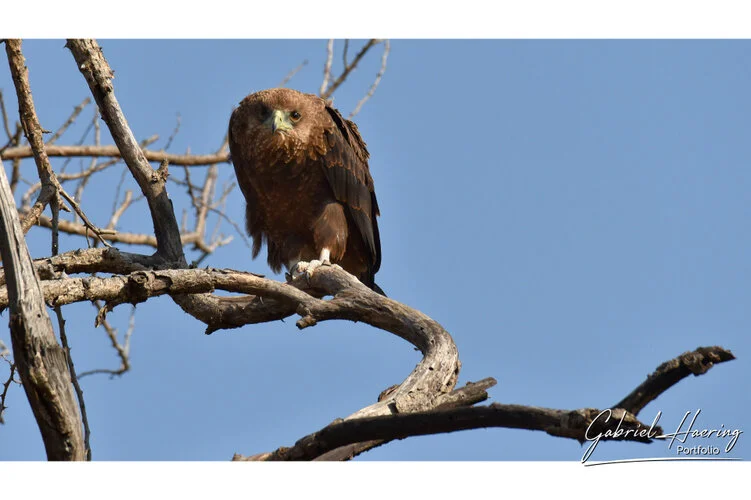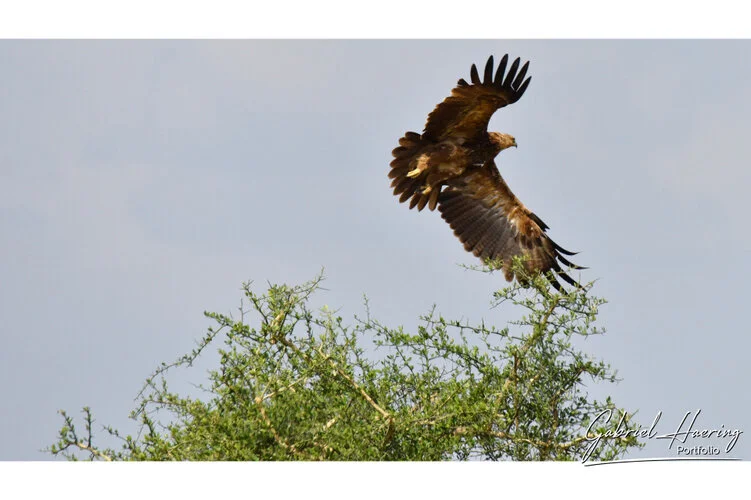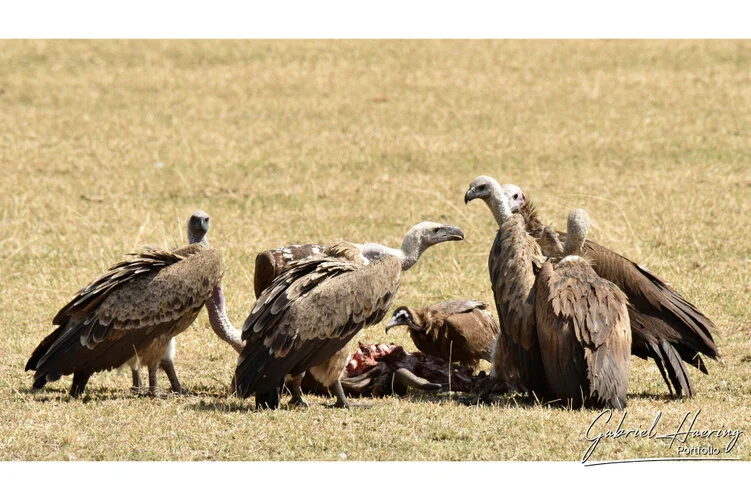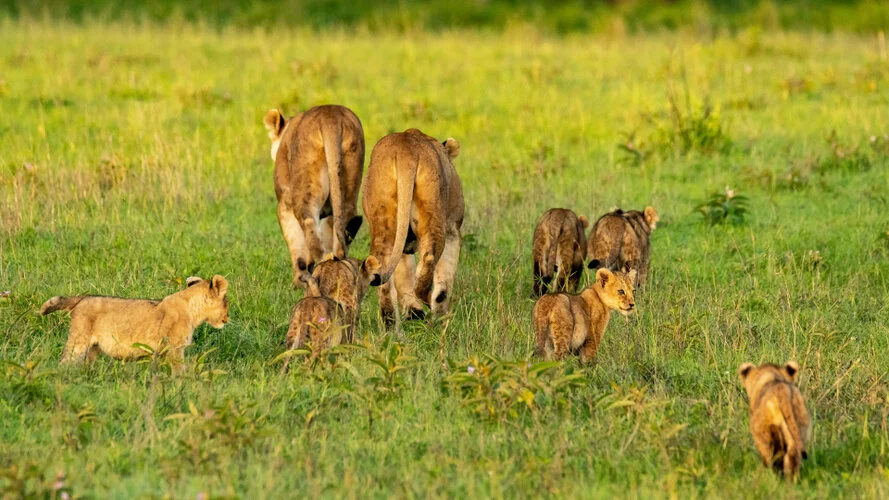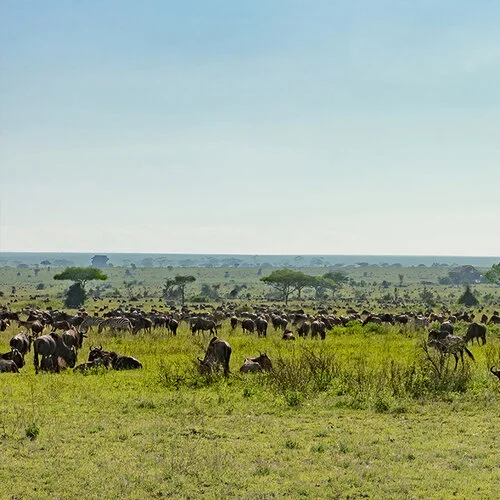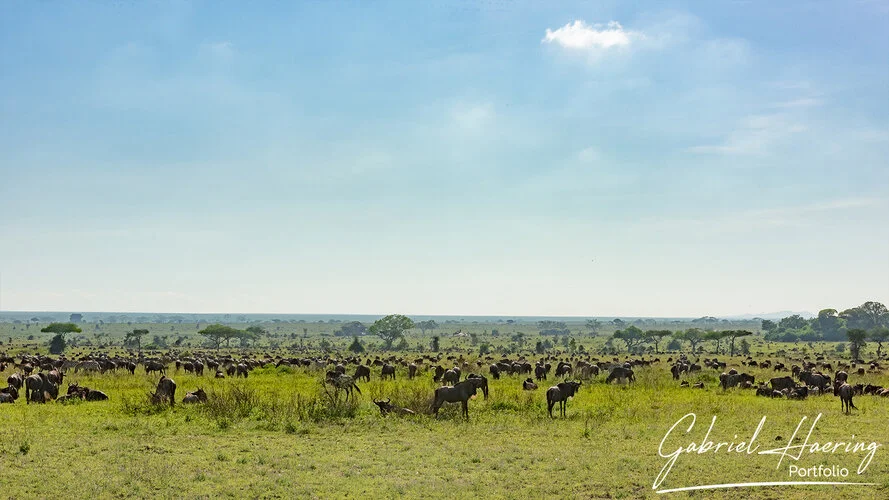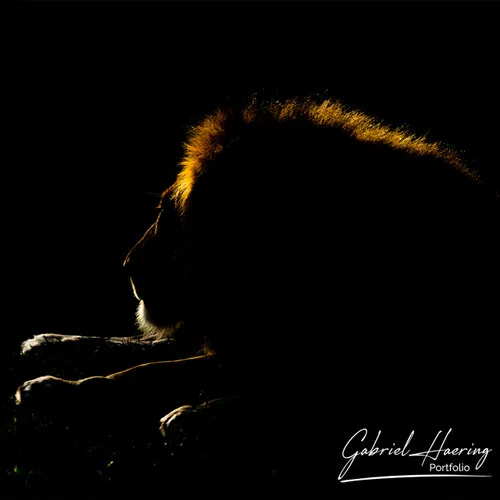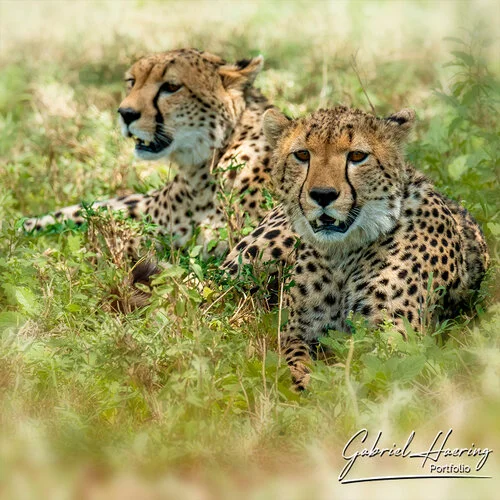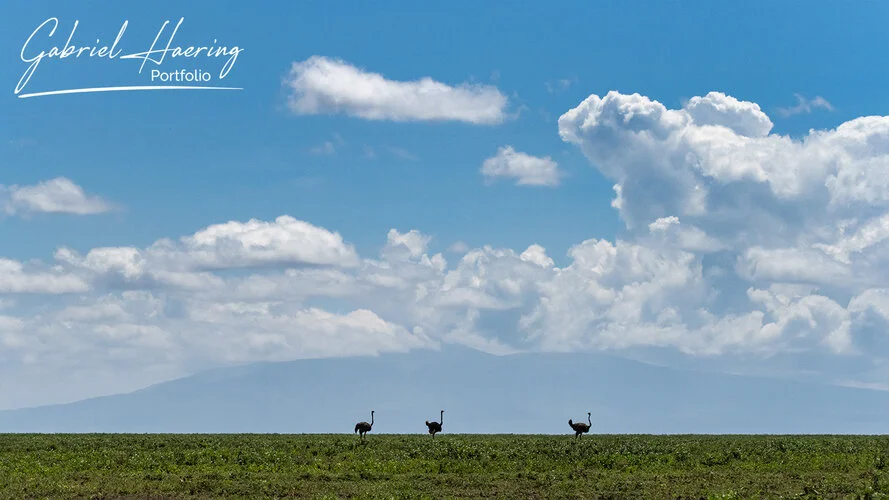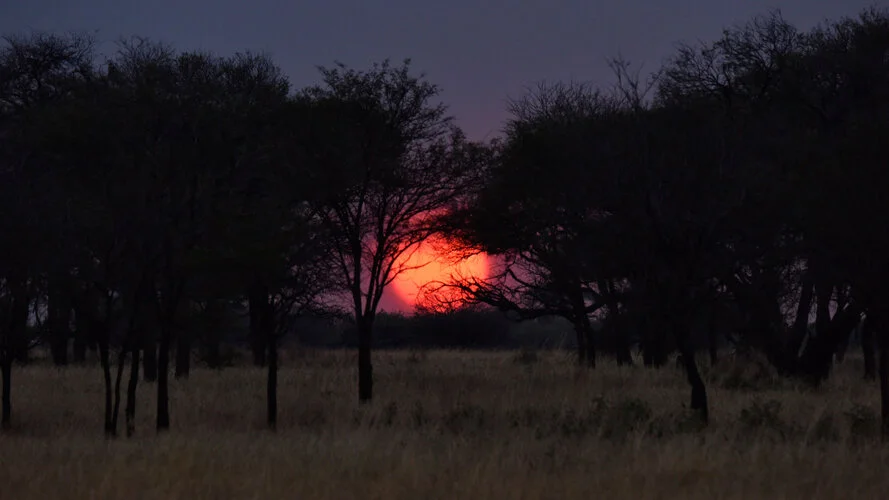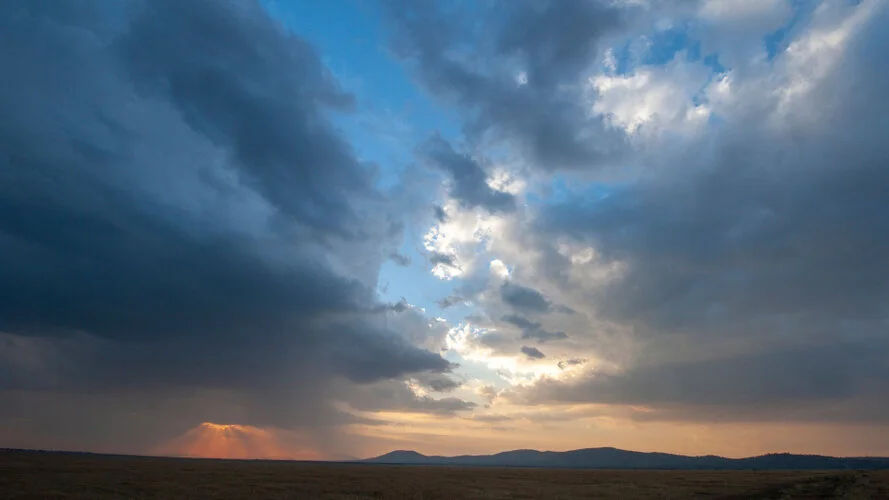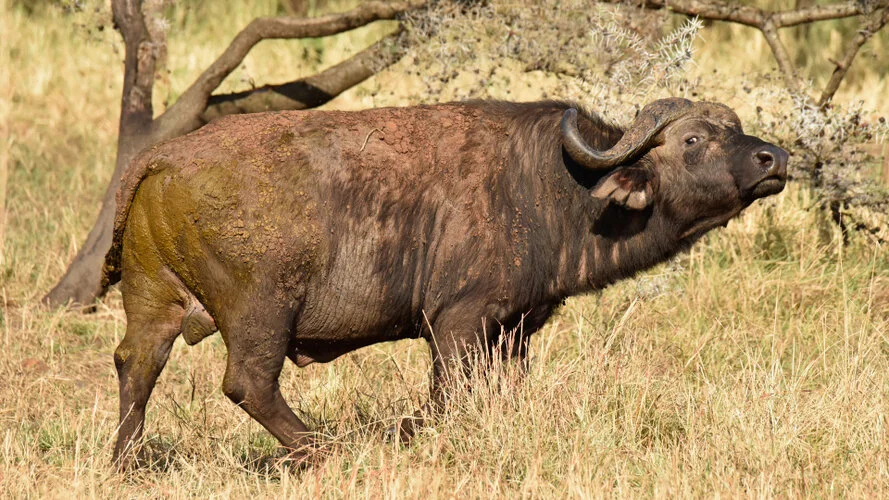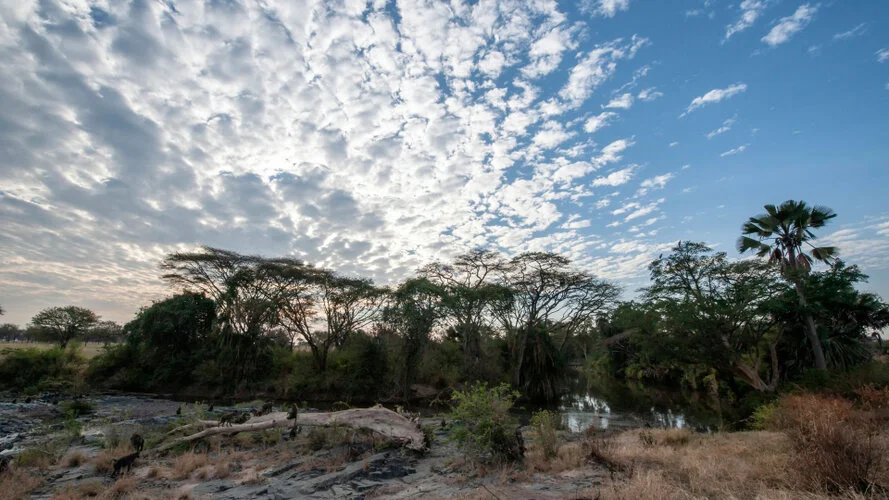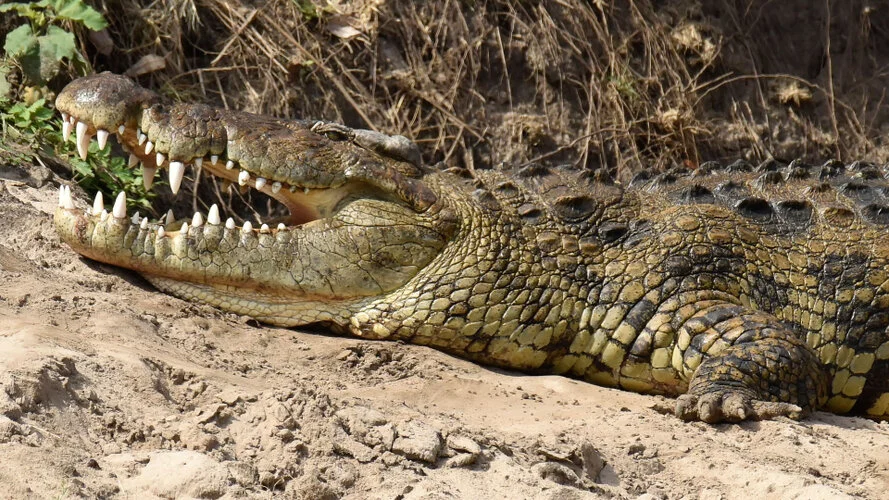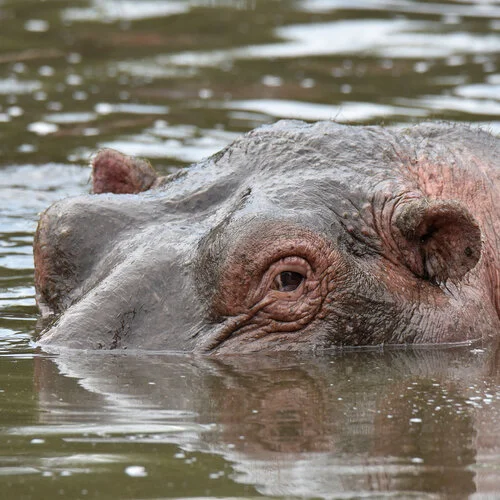Photographic Portfolio Serengeti
Menu 2 > Portfolio
Serengeti National Park Portfolio
Seronera
During my first photographic safari in 1993 in the Seronera plains, I had the opportunity to immerse myself in the vast open landscapes of central Serengeti. The dawn painted the sky with shades of pink and orange as I crossed lesser-known areas, far from the well-trodden tourist paths. In these quiet spaces, nature revealed itself in all its authenticity: herds of elephants wandered undisturbed, while lions and leopards stealthily moved through the tall grass. Every photograph captured the raw and wild beauty of the Serengeti.
Grumeti
I returned to Tanzania in June 2018, venturing into the Grumeti region during one of the less crowded stages of the great migration. The herds of wildebeest and zebras crossed the Grumeti River, where giant crocodiles patiently waited. Exploring this more remote part of the park, I was able to capture intense moments of survival, with a sense of peace and solitude rarely found in more touristy spots. Each shot encapsulated the dramatic movement of nature, with breathtaking backdrops of green hills and flowing rivers.
Ndutu
Finally, in February 2023, the safari took us to the Ndutu region during the annual migration. This area, known for its wildebeest births, was teeming with life, yet the spirit of exploration led me to less visited areas where I could observe wildlife in its purest state. Predators roamed among the herds, and the birth of young wildebeests created a powerful connection to the natural cycle.
Capturing these scenes, far from the crowd, made every photograph unique and filled with emotion.

With Photographer
Mount Kilimanjaro Airport - Tarangire NP -Ngorongoro - Serengeti NP - Mount Kilimanjaro Airport
Gabriel is joining you as wildlife photographer with Said as expert Guide and Driver
Prices are intended Per Person - Basis is 4 participants.
In the quantity indicate the number of people you would like to request the formal quotation.
Don't worry about clicking "Buy". This is a pre-reservation to be confirmed and not a formal order.
Gabriel is joining you as wildlife photographer with Said as expert Guide and Driver
Prices are intended Per Person - Basis is 4 participants.
In the quantity indicate the number of people you would like to request the formal quotation.
Don't worry about clicking "Buy". This is a pre-reservation to be confirmed and not a formal order.
Price without discount5,440 $
About Serengeti National Park
Serengeti National Park, located in northern Tanzania, is one of the most renowned wildlife destinations in the world. Established in 1951, the park covers an area of approximately 14,750 square kilometers, comprising vast plains, rolling hills, and picturesque acacia woodlands. The name "Serengeti" comes from the Maasai word "Siringet," meaning "endless plains," which perfectly describes the park's seemingly limitless savannas.
Serengeti is celebrated for its rich biodiversity and is home to the "Big Five" — lions, leopards, elephants, buffalos, and rhinoceroses — along with cheetahs, giraffes, zebras, and more than 500 bird species. However, the park's most famous attraction is the annual Great Migration, during which over two million wildebeests, zebras, and gazelles traverse the Serengeti ecosystem in search of fresh grazing grounds. This extraordinary migration is considered one of the "Seven Natural Wonders of Africa" and draws wildlife enthusiasts and photographers from around the globe.
Seasonal Changes and Wildlife Patterns
The Serengeti's wildlife and landscapes undergo dramatic transformations with the seasons, significantly influencing animal behavior and migration patterns. The dry season, which lasts from June to October, is a prime time for wildlife viewing. With limited water sources, animals gather around rivers and waterholes, making it easier to spot large herds of herbivores and the predators that follow them. Lions, cheetahs, and hyenas are particularly active during this time, taking advantage of the abundance of prey.
The Great Migration is the defining feature of the park's seasonal changes. From November to March, during the wet season, wildebeest herds begin calving in the southern Serengeti, particularly in the Ndutu region. By April and May, the migration begins in earnest, as millions of animals start moving northwest toward the Grumeti River, where dramatic river crossings take place, often with crocodiles lurking nearby. From July to October, the herds continue moving into the northern Serengeti and the Maasai Mara in Kenya, creating unforgettable wildlife viewing opportunities as they make their way across the plains.
Tips for Photographers Visiting Serengeti National Park
Serengeti National Park offers some of the most spectacular photographic opportunities in the world. Here are a few tips to help you make the most of your Serengeti photography experience:
- Plan Around the Migration: Timing is key to capturing the Great Migration. The river crossings between July and October offer particularly dramatic shots, with wildebeests and zebras braving crocodile-infested waters.
- Golden Hour for Best Lighting: Early mornings and late afternoons, known as the golden hours, provide the best light for photography. The soft, warm light during these times enhances the beauty of the landscape and wildlife.
- Telephoto Lens for Wildlife: Bring a telephoto lens (400mm or more) to capture close-ups of animals, especially when photographing elusive predators like leopards and cheetahs.
- Wide-Angle for Landscapes: To fully capture the vastness of the Serengeti and the immense herds during the migration, use a wide-angle lens to frame the animals against the sweeping plains.
- Patience with Predators: Predators such as lions and leopards are often seen lounging during the day. Be patient and ready to capture their activity when they become more active at dawn or dusk.
What is Special About Endelevu Private Photographic Safari?
Endelevu Tours offers an exceptional Private Photographic Safari experience in Serengeti National Park, specifically designed for photography enthusiasts. What sets this safari apart is its focus on providing guests with exclusive access and expert guidance to capture the best wildlife moments. Endelevu’s private tours allow photographers to explore the park at their own pace, ensuring they have ample time to position themselves for the perfect shot.
The safari vehicles are custom-designed with open sides and roof hatches, offering an unobstructed view for wildlife photography. Endelevu’s guides are experienced photographers who know the best locations and times for capturing stunning images, from the action-packed river crossings during the Great Migration to intimate portraits of Serengeti’s diverse wildlife.
Endelevu also emphasizes sustainability and responsible tourism. Their commitment to eco-friendly practices ensures that your photographic safari not only leaves a minimal environmental footprint but also supports local communities and conservation efforts. With Endelevu’s dedication to delivering a unique, sustainable, and immersive experience, photographers can enjoy Serengeti’s beauty while helping to protect it for future generations.



